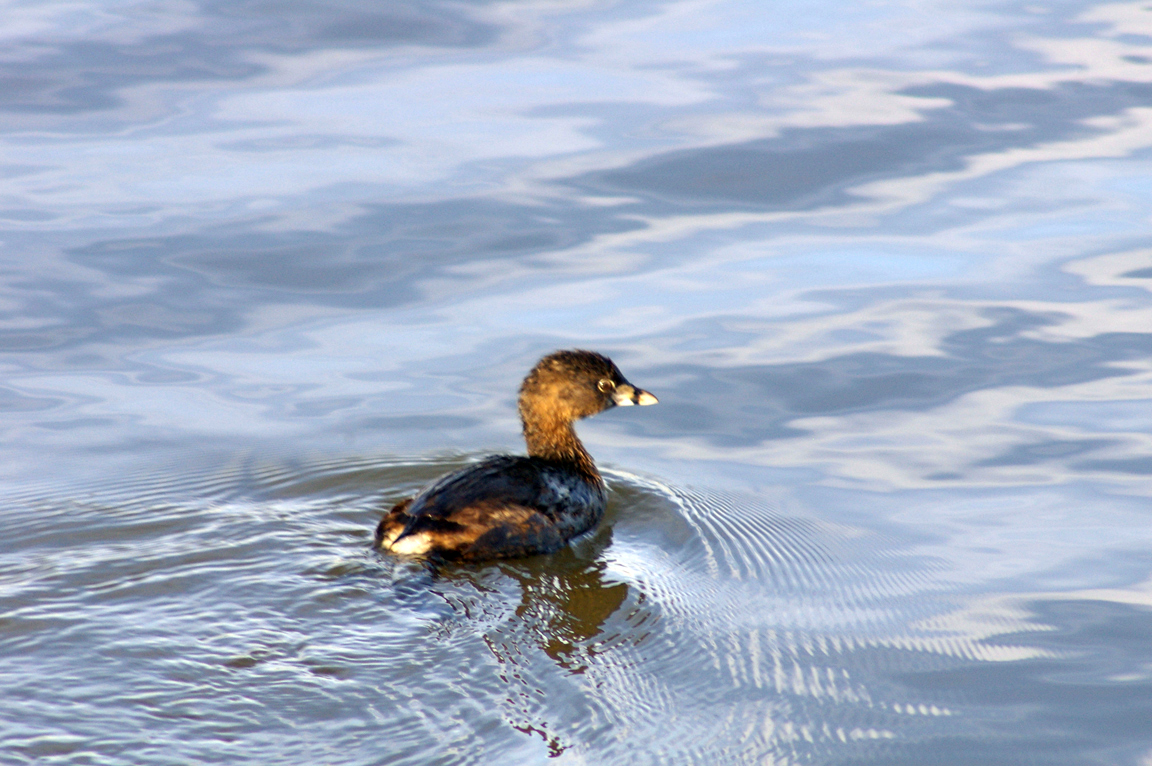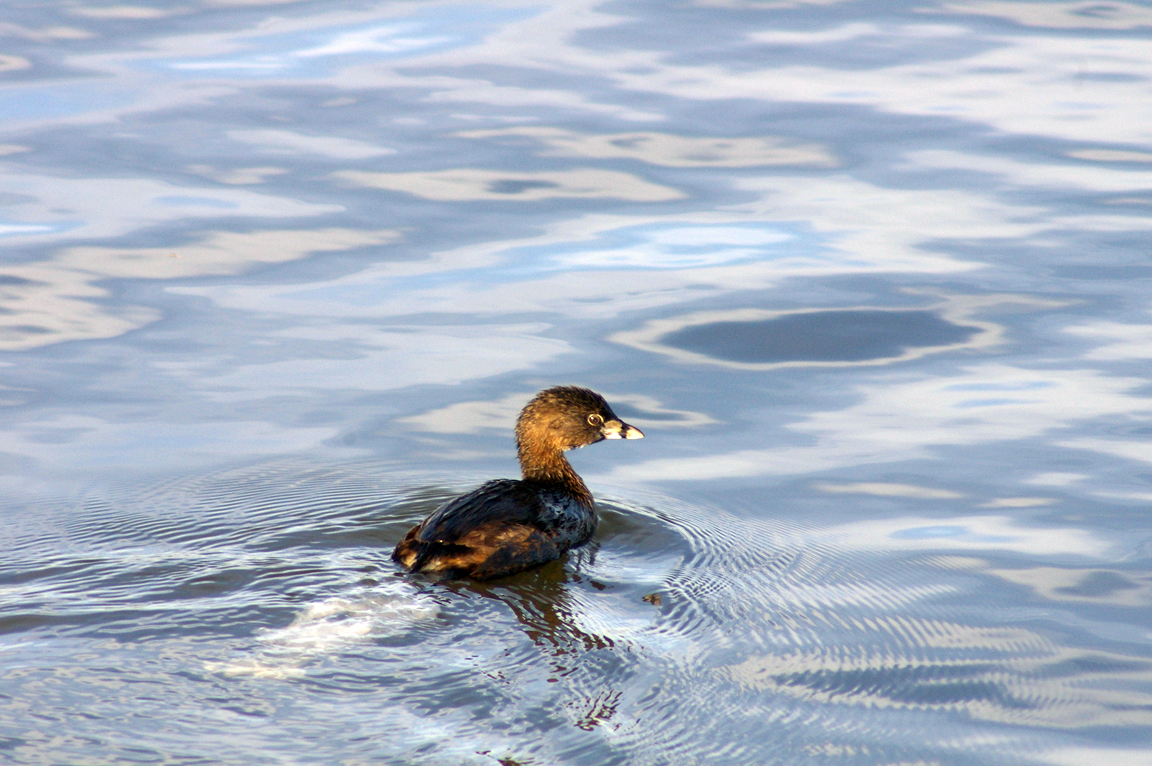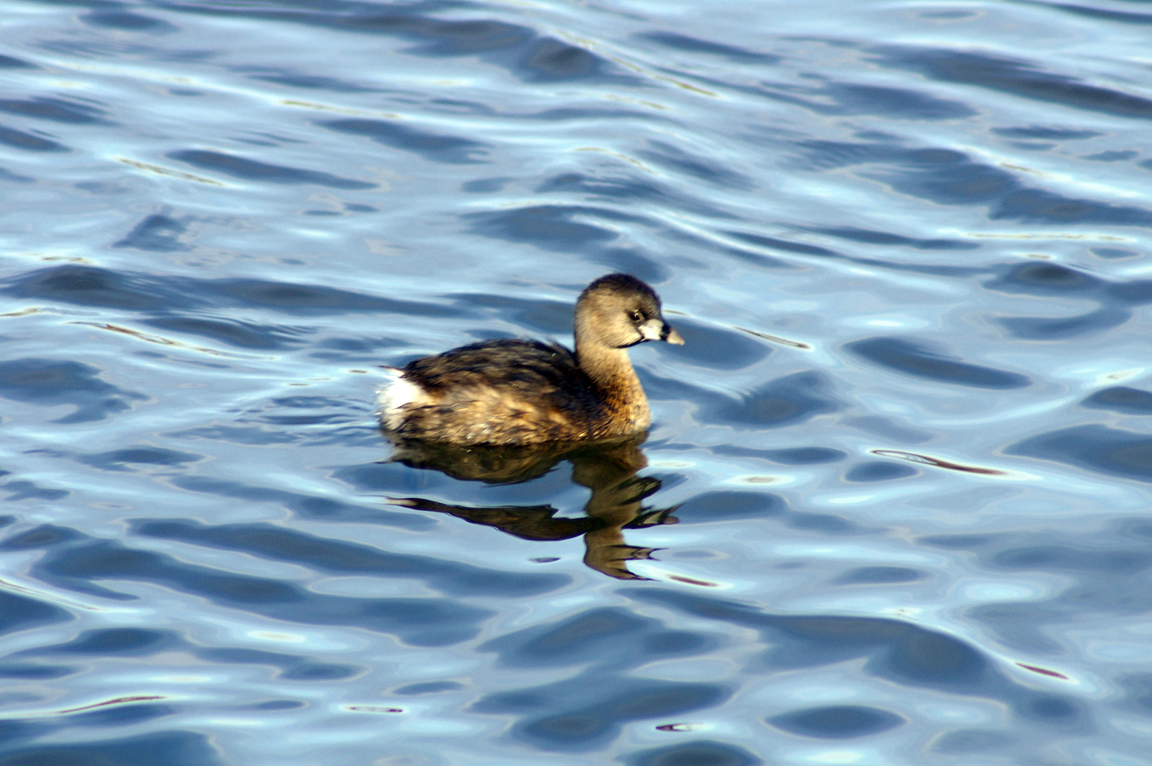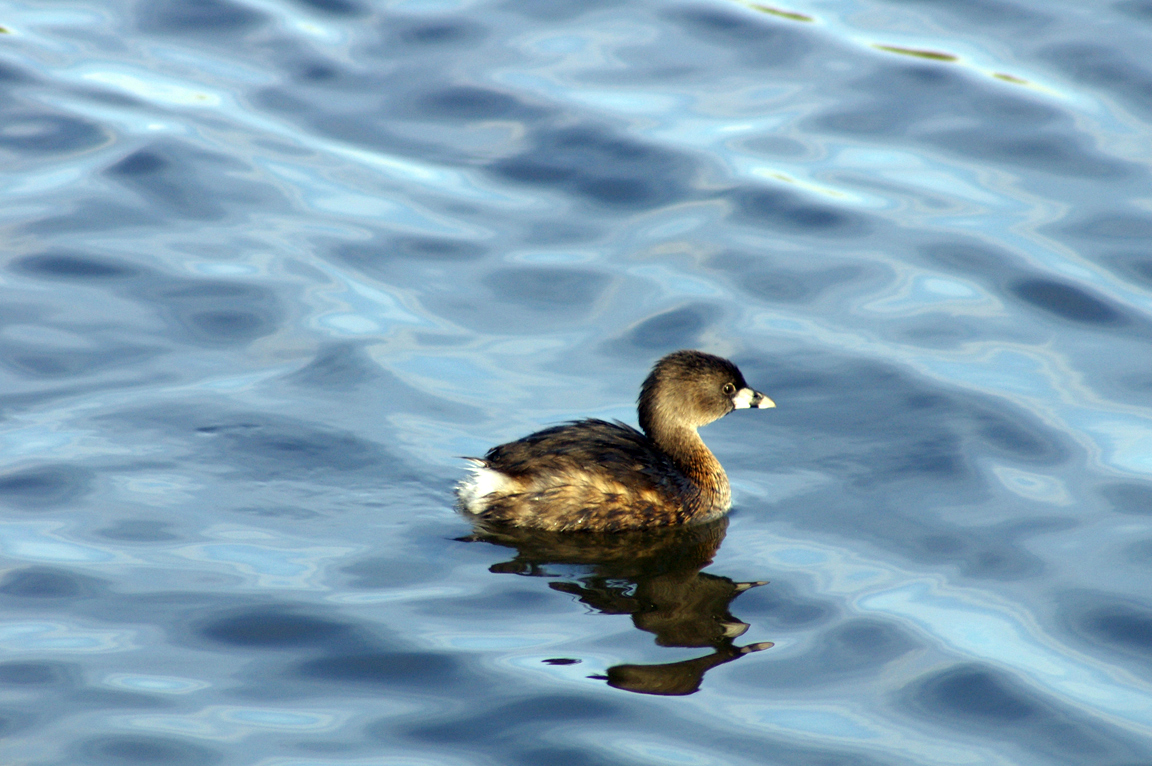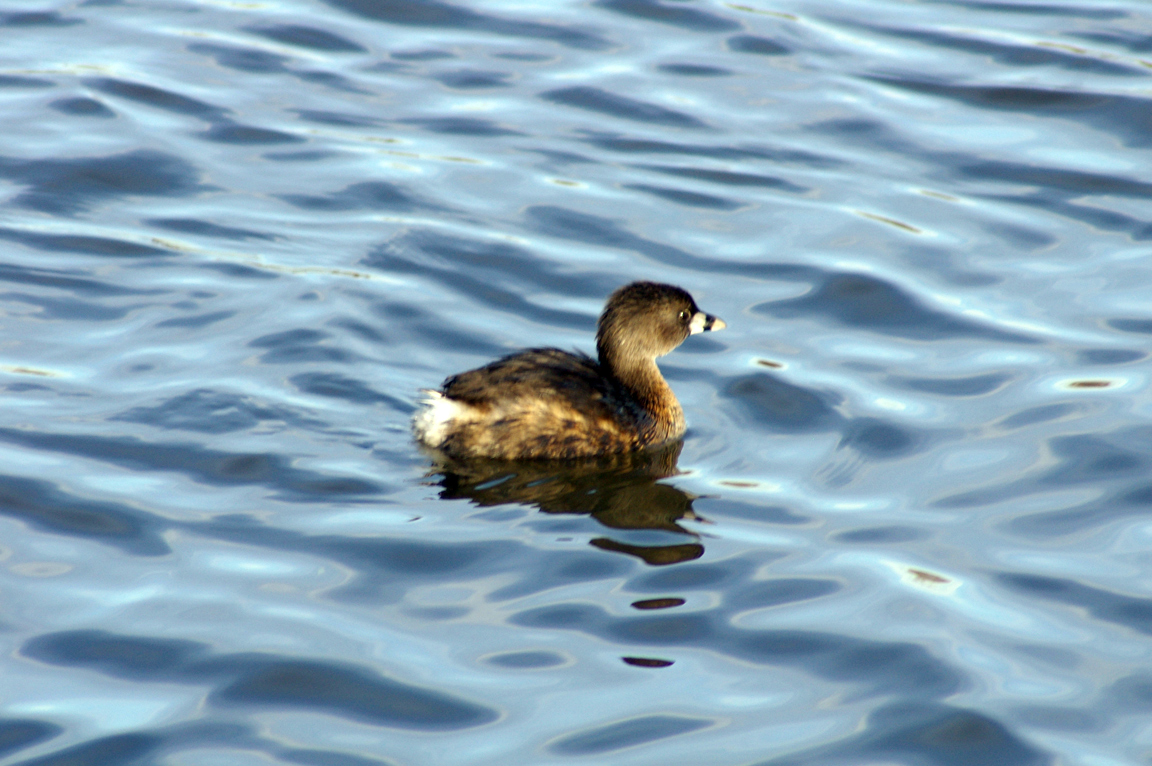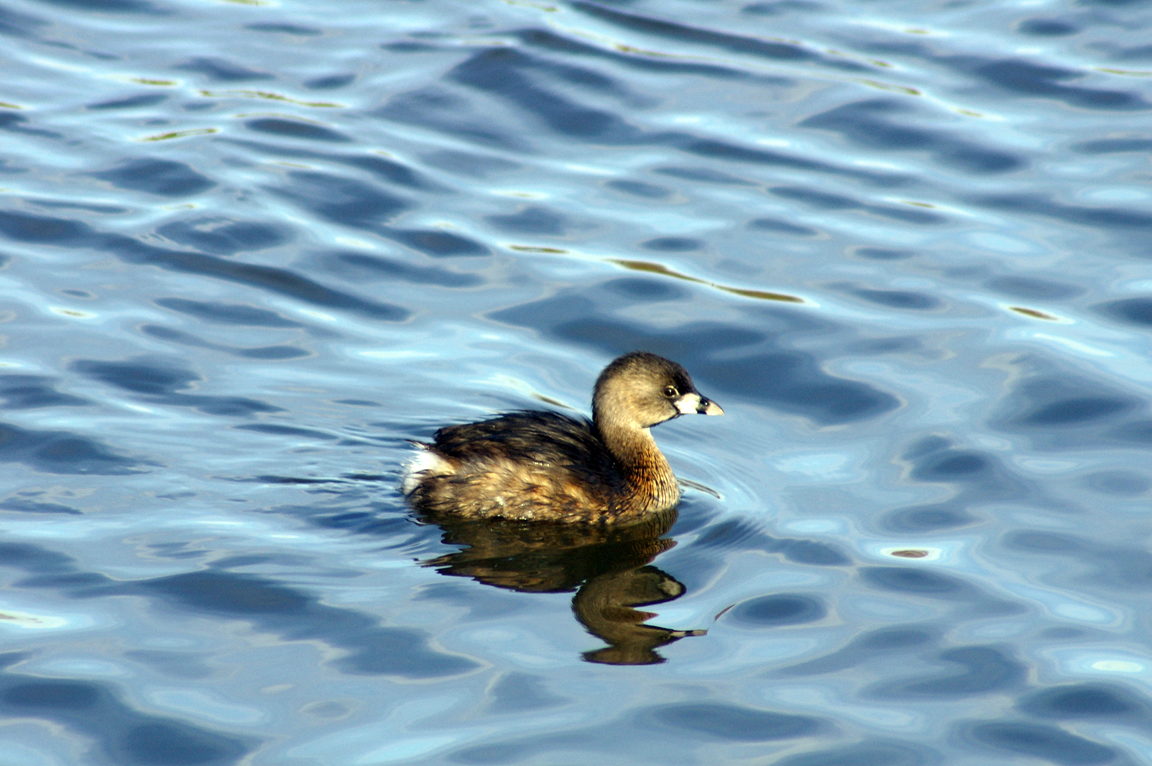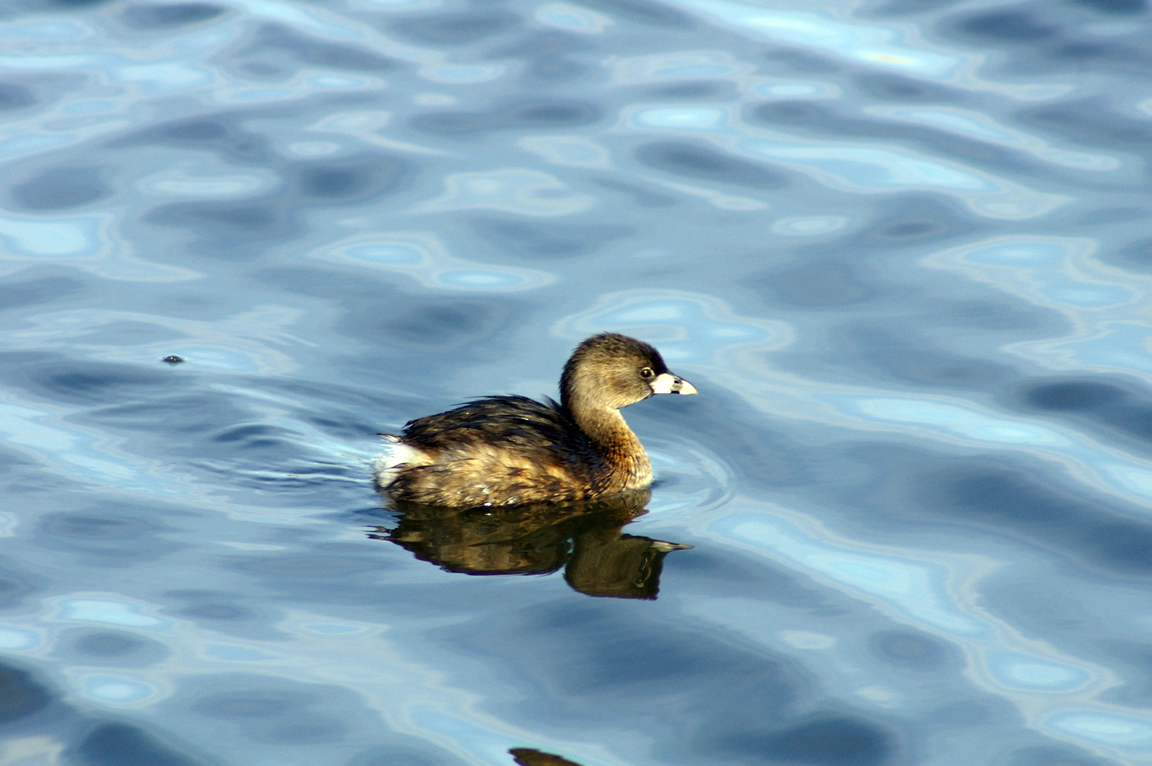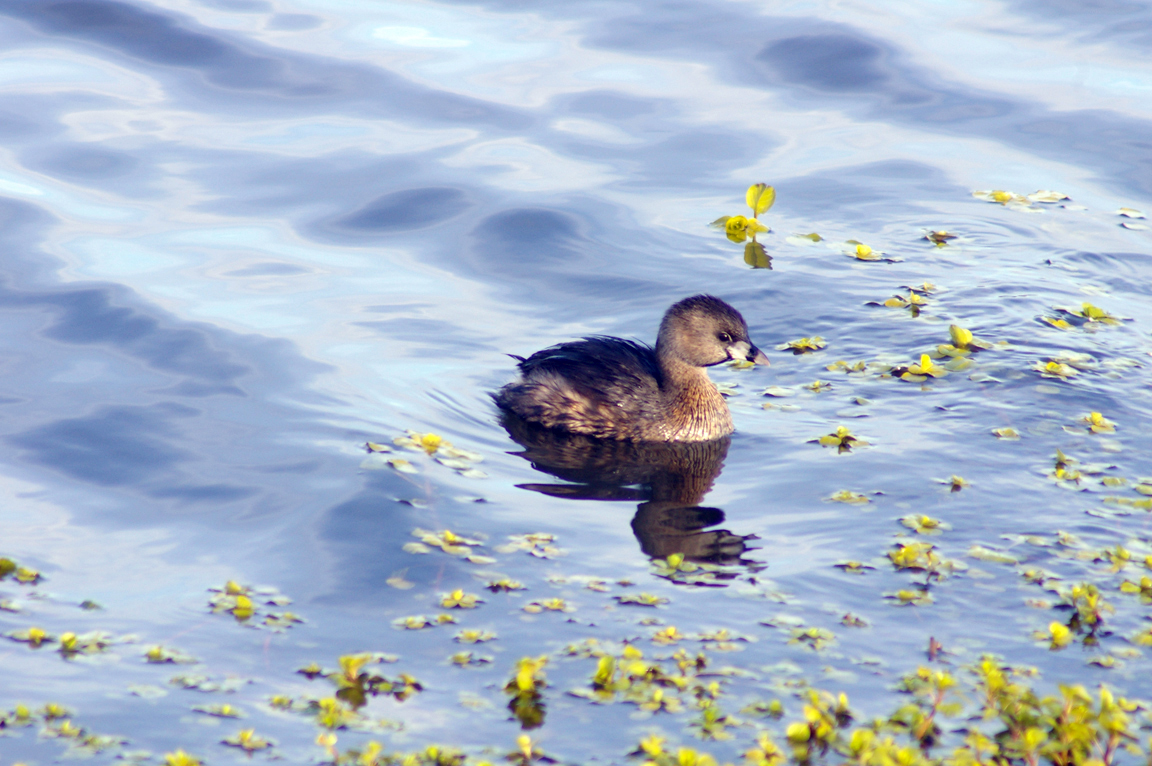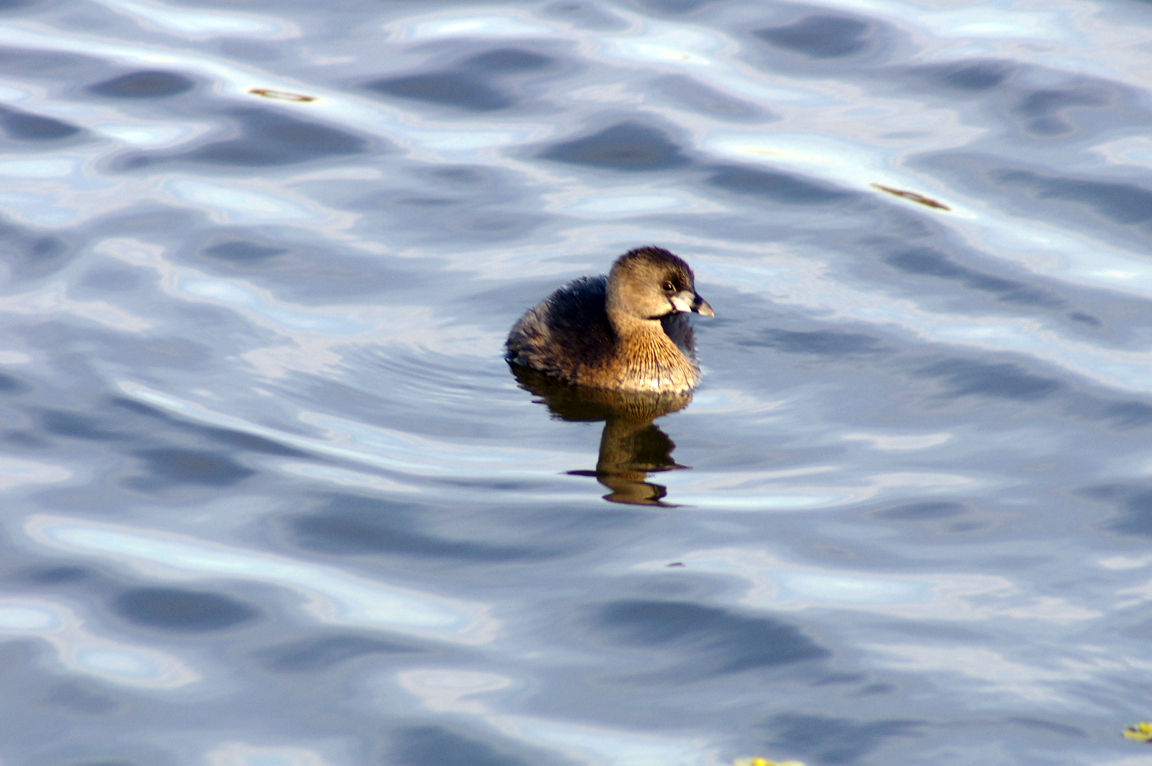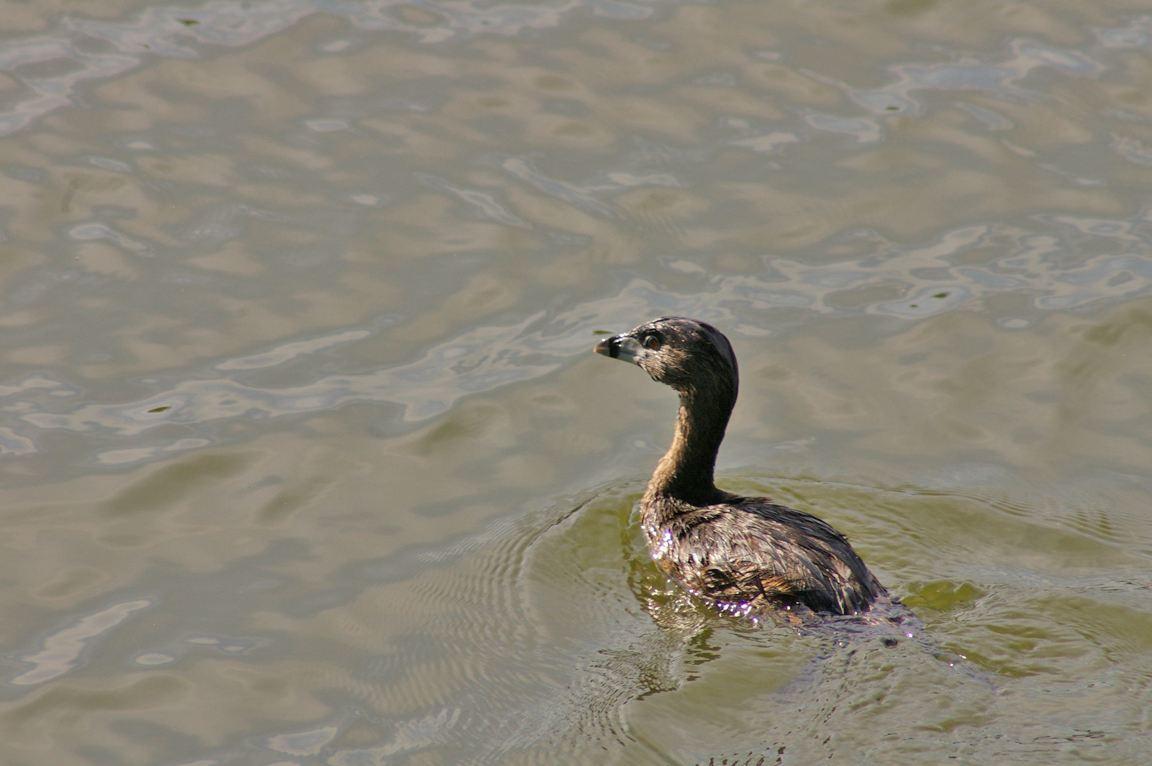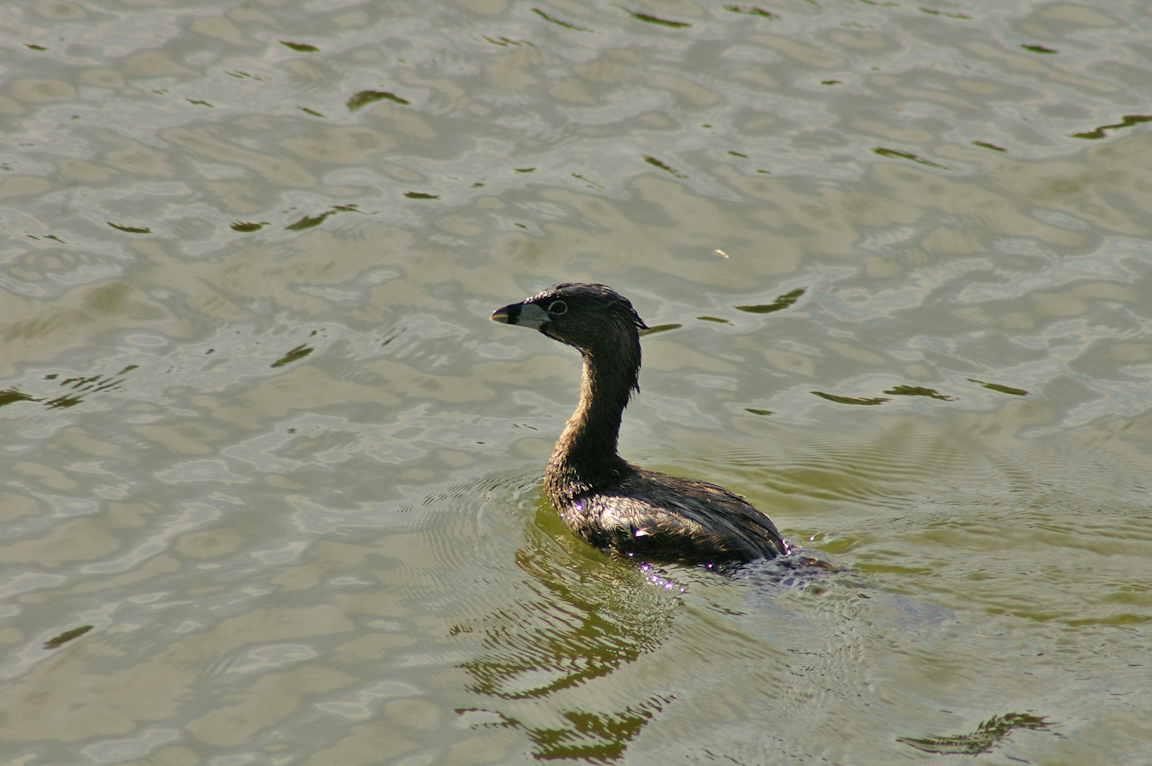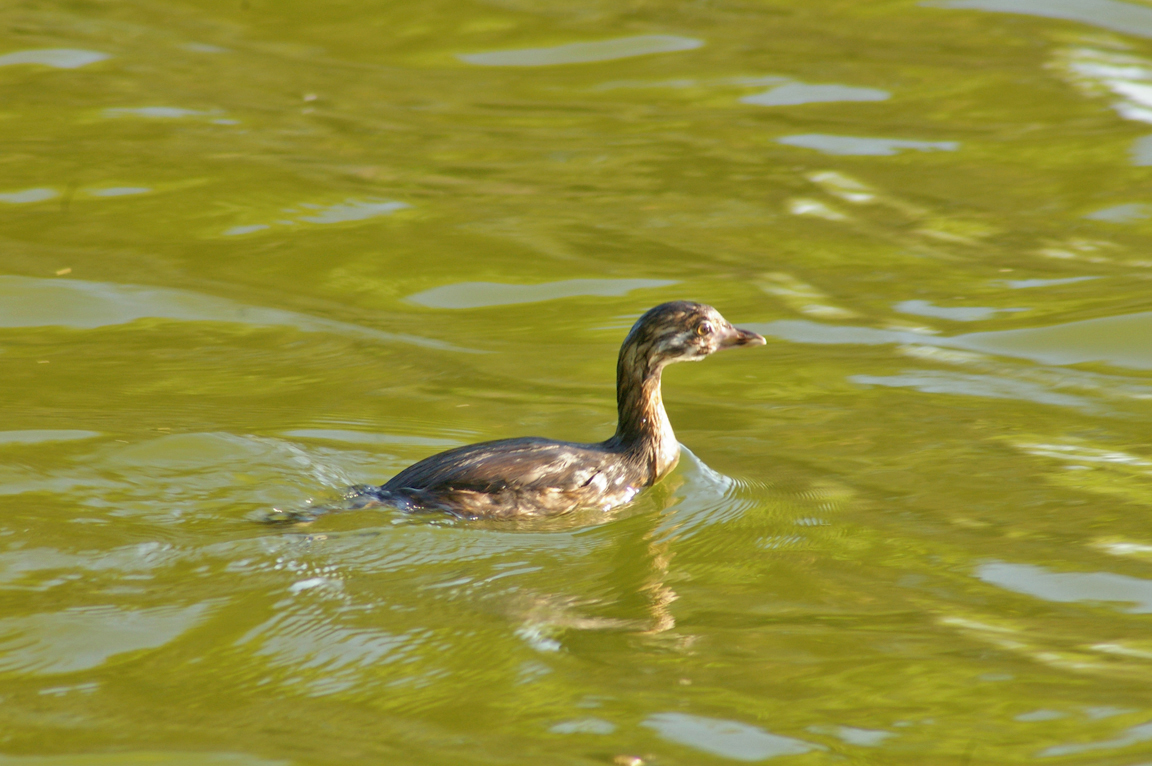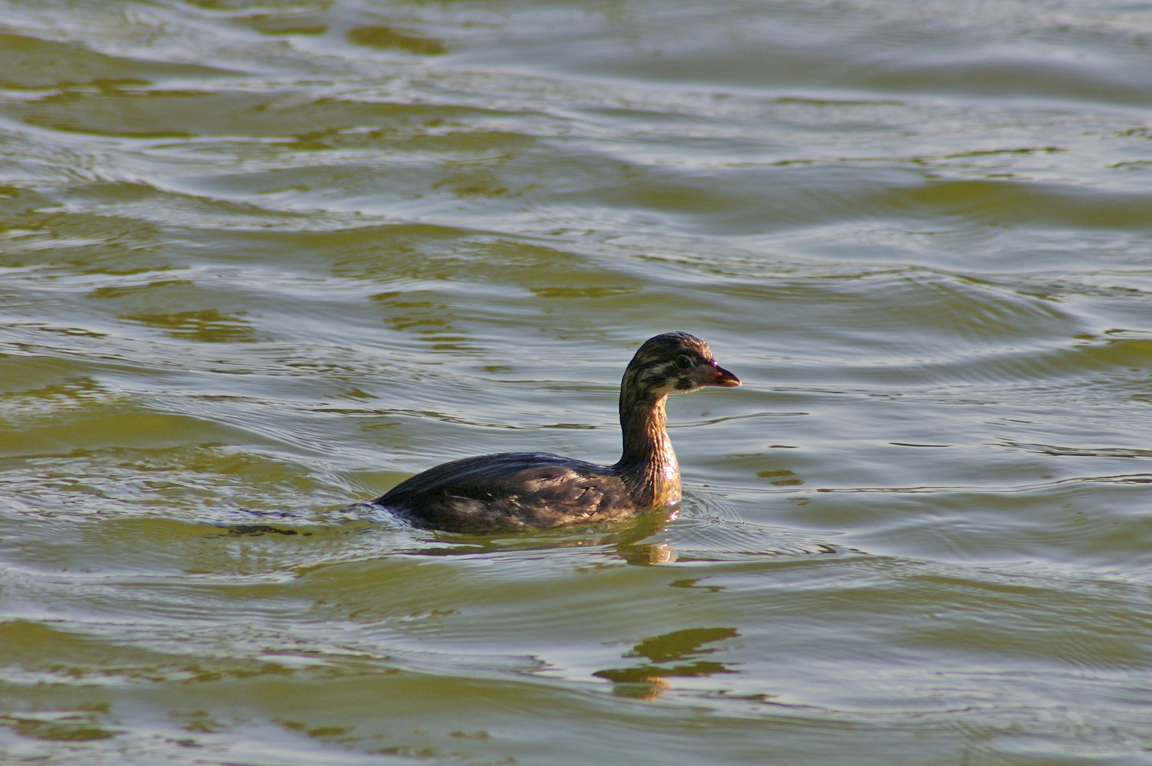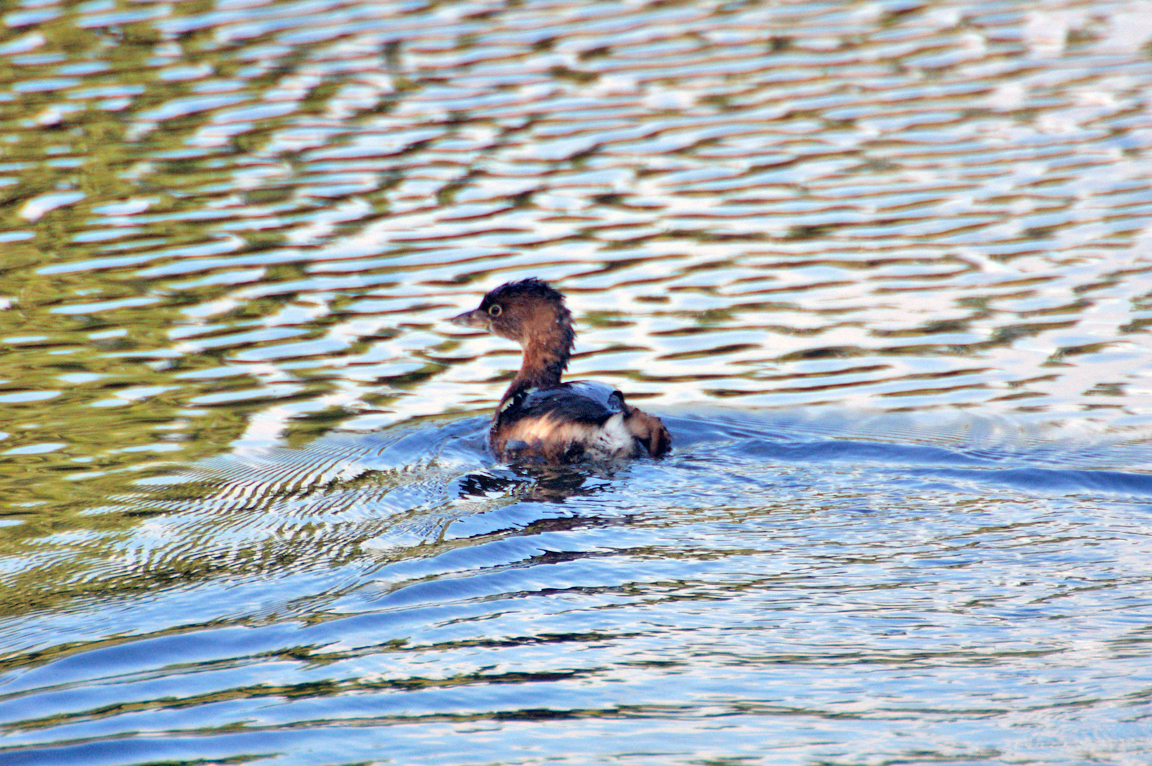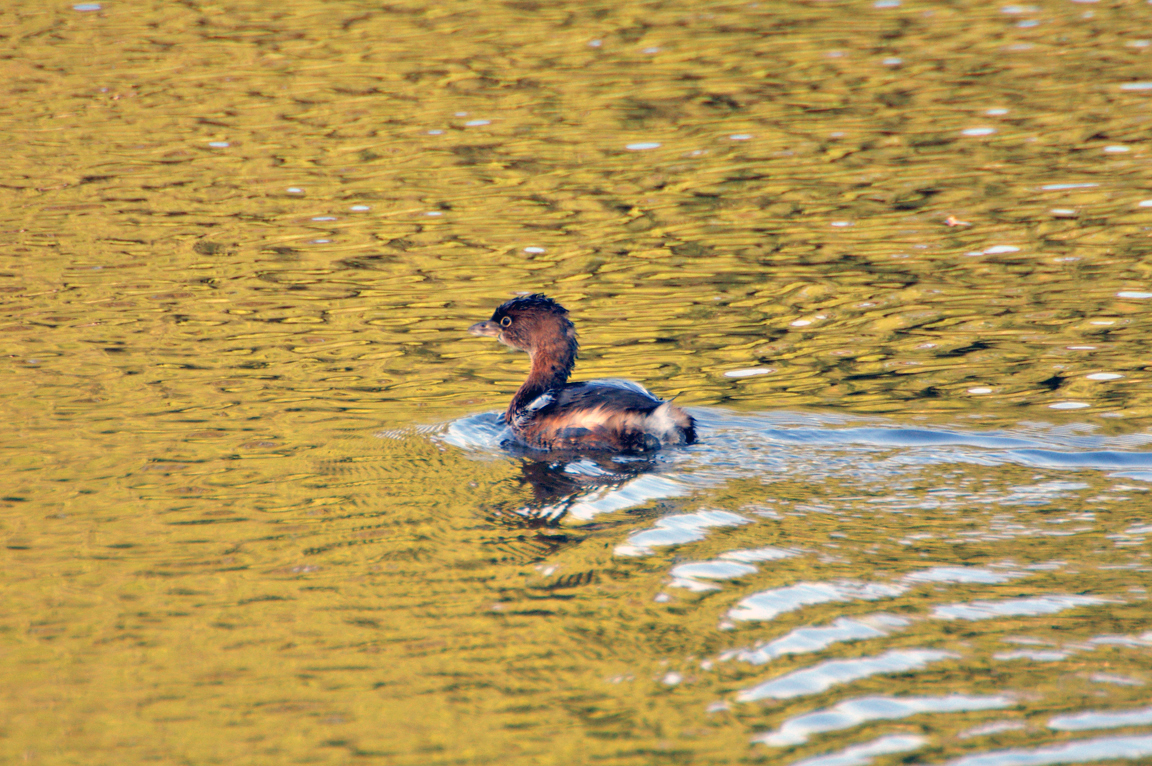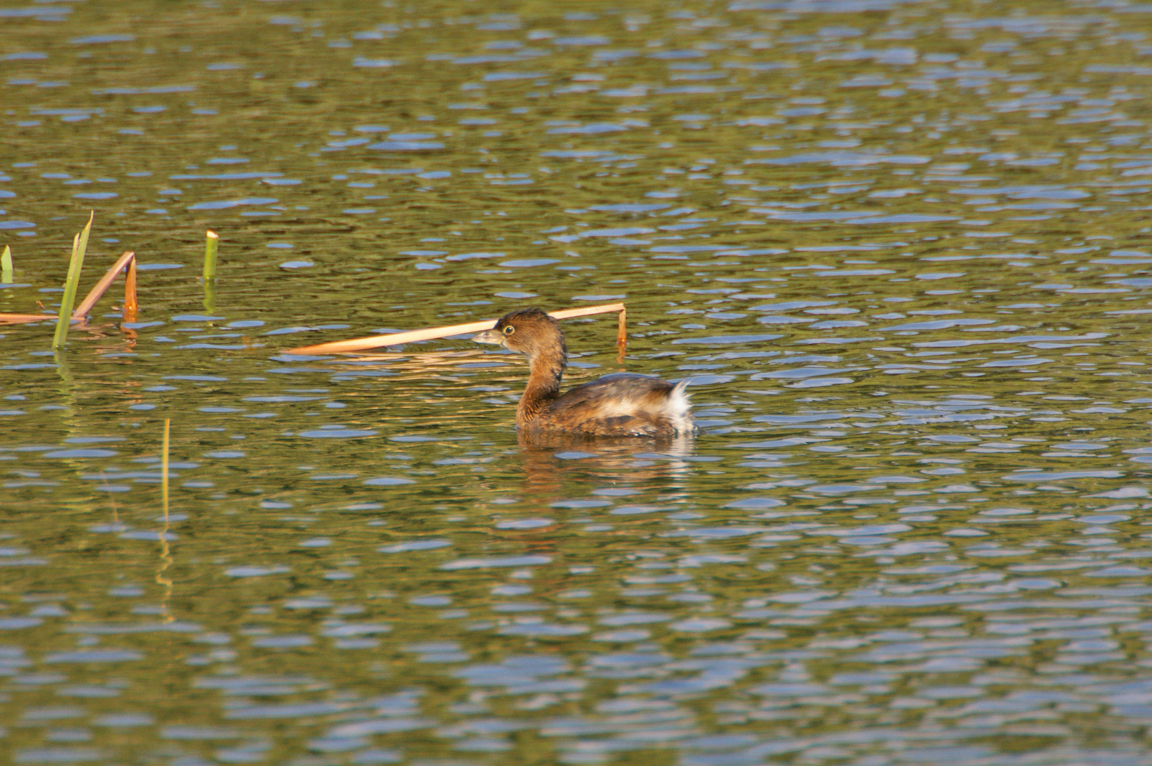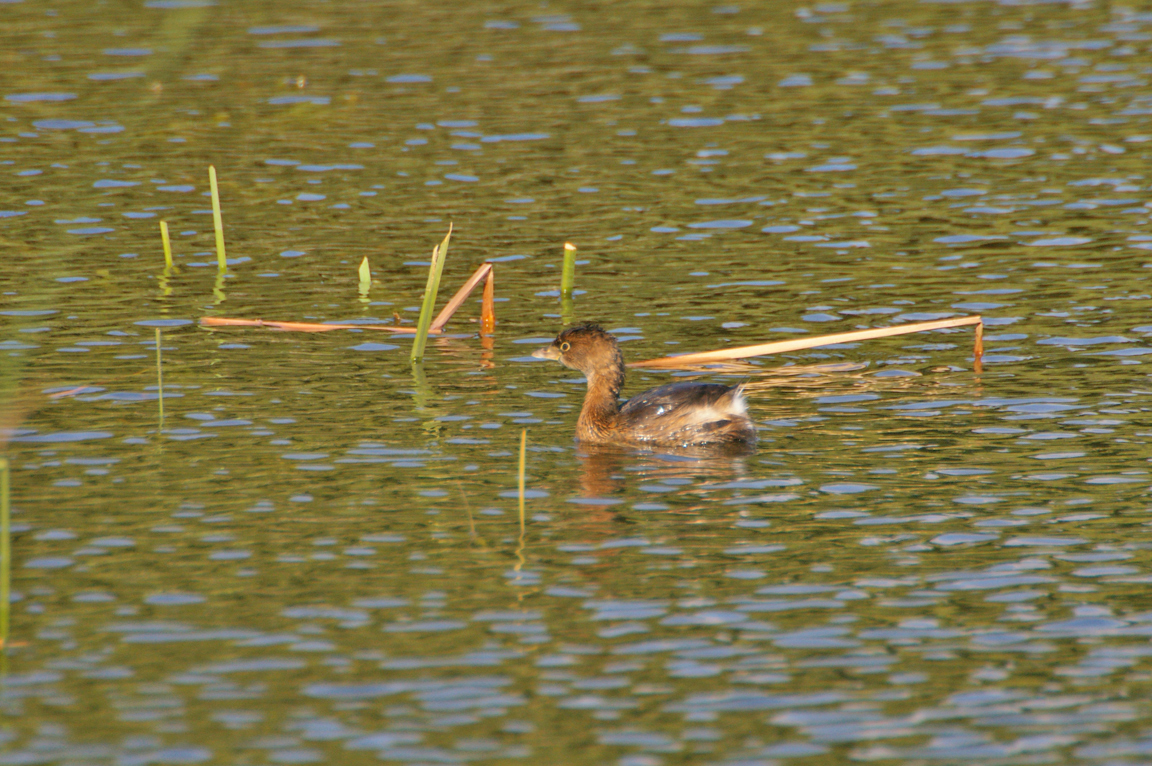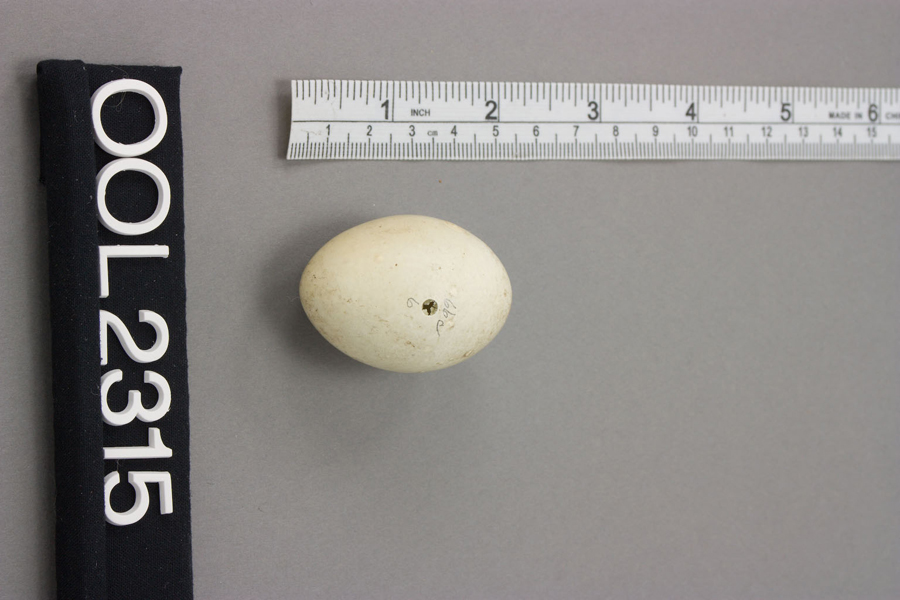|
|
|
 |
Pied-billed Grebe
|
| Podilymbus podiceps | |
A small diving bird with a chicken-lke bill, the Pied-billed Grebe is common on lakes and ponds across North America. It is rarely seen flying and prefers to sink out of sight when danger threatens.
Interesting Information
-
The Pied-billed Grebe is rarely seen in flight. It prefers to escape predators by diving, and it migrates at night. However, it can fly, and stray individuals have reached Hawaii and Europe.
-
Although it swims like a duck, the Pied-billed Grebe does not have webbed feet. Instead of having a webbing connecting all the toes, each toe has lobes extending out on the sides that provide extra surface area for paddling.
-
The downy chicks can leave the nest soon after hatching, but they do not swim well at first and do not spend much time in the water in the first week. They sleep on the back of a parent, held close beneath its wings. By the age of four weeks, the young grebes are spending day and night on the water. For the first ten days their response to danger is to climb onto a parent's back. After that, when danger threatens, they dive under water.
Description
Adult Description
-
Size: 30-38 cm (12-15 in)
-
Wingspan: 45-62 cm (18-24 in)
-
Weight: 253-568 g (8.93-20.05 ounces)
-
Small waterbird.
-
Brown head and body, with tufted, whitish rump.
-
Small head and bill.
-
Bill short, but thick.
-
Bill pale, with black ring around it in summer.
-
Black throat in summer.
-
Crown to back dark brown.
-
Face and neck light gray.
-
Chest mixed white and light brownish yellow, with irregular black spots.
-
Belly white, with some black spots.
-
Flanks white to pale brownish yellow.
-
Undertail white.
-
Tail dark brown.
-
Legs and feet black.
Sex Differences
Sexes similar.
Immature
Juvenile similar to winter adult, but face with dark and pale stripes.
Breeding adult (Alternate Plumage)
Bill ivory-white to bluish gray, with thick black band around middle. Throat black. Eyes reddish brown. Eyering bluish white.
Nonbreeding adult (Basic Plumage)
Bill brownish flesh, sometimes with faint band. Throat white, shading to grayish on sides of neck and head. Sides of neck, throat, and upper breast reddish brown. Eyering brownish to bluish white.
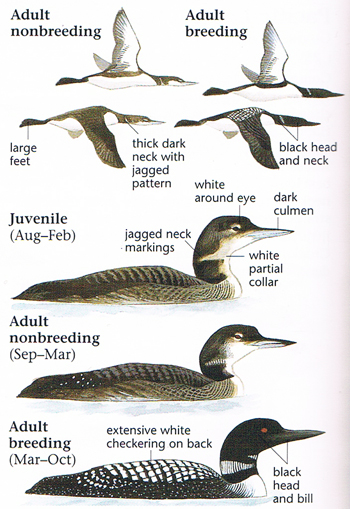
Photo taken from: The Sibley Field Guide by David Allen Sibley
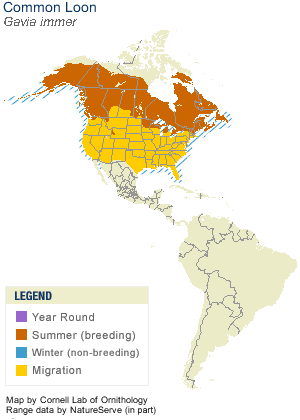
© 2003 Cornell Lab of Ornithology
|
Habitat |
|
Breeds on seasonal or permanent ponds with dense stands of emergent vegetation, bays and sloughs. Uses most types of wetlands in winter. |
|
Behavior |
|
Dives underwater for food, in open water and among aquatic vegetation. |
|
Food |
|
Fish, crustaceans (especially crayfish), and aquatic insects. |
Taxonomy
| Kingdom: | Animalia |
| Phylum: | Chordata |
| Subphylum: | Vertebrata |
| Class: | Aves |
| Order: | Podicipediformes |
| Family: | Podicipedidae |
| Genus: | Podilymbus |
| Species: | Podilymbus podiceps |
| Subspecies: | Podilymbus podiceps antarcticus |
| Podilymbus podiceps antillarum | |
| Podilymbus podiceps podiceps |
Similar Species |
|
|
Bird Sound |
|
Song a loud "kuk-kuk-kuk, kaow, kaow, kaow, kaow, kaowk, kaowk, kawk." |
|
Eggs look like this |
|
Photo taken from: ARCTOS Collaborative Collection Management Solution |
